- Home
- Patrick Robinson
The Shark Mutiny (2001) Page 34
The Shark Mutiny (2001) Read online
Page 34
He rose rapidly in dark blue, making Lieutenant in double-quick time, and serving as a gunner and missile officer in an Arleigh-Burke destroyer before the age of 25. This was good, but not good enough for the restless Dallas, who suddenly, to the surprise of his colleagues, requested a transfer to the US Navy SEALs.
He crashed through the BUD/S course, finishing in third place, complaining he’d probably “been stitched up”—most SEALs are happy to pass through in the first 30. And throughout his short, but meteoric, career people had been more or less divided on whether he would end up in Admiral Bergstrom’s chair, or in a box with a posthumous Medal of Honor. He was tough as hell, brave as a lion and smarter than almost everyone. But there was a daredevil in his soul, and that might either save the lives of an entire squadron or, alternately, get them into terminal trouble.
Commander Hunter was in no doubt. Lieutenant MacPherson was reputed to be the most brilliant young explosives expert on the base, a progressive Naval scientist on the subject of demolition in all its forms. Rick Hunter would take Lt. MacPherson any day, on the strength of his swiftness of thought. When he appointed him, he had said, “Dallas, where we’re going, the only thing that’s gonna keep us alive is brains. Keep using ’em, and we’ll make it out.”
In fact, Lt. MacPherson’s father was a distant cousin of the veteran Secretary of Defense, Robert MacPherson. And when news of this had seeped through various wardrooms, one senior commanding officer had remarked playfully, “Well, young Dallas, you can’t beat a few family connections in the military to ensure you advance your career.”
“Sure can’t, sir,” replied the twenty-two-year-old Midshipman. “I taught that Bob MacPherson damn near everything he knows.”
And now, right here in the most secretive room in the most remote American Naval base, Dallas was about to undertake an awesome responsibility, not only to accept command of the entire force, should anything befall the leader, but to ensure personally the total destruction of the geothermal power station on the island of Haing Gyi.
Rick Hunter introduced him carefully, as a young officer in whom he had the utmost confidence, and from whom they must take orders unquestioningly while working in the Chinese electricity-generating plant.
He then introduced his personal bodyguard, Lt. Bobby Allensworth, with whom he had served on another highly classified mission the previous year. He provided no background, certainly not the information that young Bobby had fought his way out of a life of petty crime in south-central Los Angeles and obtained his commission in the U.S. Marine Corps. He said merely that Lt. Allensworth would be personally responsible for the safety of the force, particularly if they had to fight their way in, though he hoped this would not be necessary.
Chief Petty Officer Mike Hook, also from Kentucky, a medium-sized supreme athlete and swimmer, was included as the number-two explosives expert on the team. He would be personal assistant to Lt. MacPherson during the time setting of the charges and the guardian of the special bomb they would carry in—the one Dallas said would split the steam shaft asunder, releasing a massive geothermal force, which might very well blow up the entire base.
“How far in the clear do we want to be when that happens?” asked someone.
Before Commander Hunter could reply “One hour,” Lt. MacPherson remarked he thought back in Coronado would be just perfect.
That was the deceptive side of Lt. MacPherson’s character. He sometimes sounded merely flippant, but the truth was he was always a few strides in front. He knew “one hour” was correct, but he’d gone past that and was instinctively trying to defuse the tension, trying to reduce the fear factor, the prospect of the unknown. Some officers think this approach has no value whatsoever. But you still have to be extremely able to do it. And Commander Hunter laughed anyway.
Only Lt. MacPherson understood the perfect timing required to send that armor-piercing, steel-cased bomb thousands of feet down the main steam shaft, to blast the giant well-head valve apart and release the seismic energy from the core of the earth.
“Gentlemen,” said the Commander, “details of the in-base mission will be clarified during the three-day journey to the Bay of Bengal. Right now I am intending to show you precisely where we are going, how we land, where we get off and the main drive of our objective.”
Briefly he introduced other key members of the team: two SEALs who had also served under his command the previous year in the South China Sea, Riff “Rattlesnake” Davies and Buster Townsend, the radio operator. Both were from St. James’s Parish down in Louisiana’s Mississippi Delta. Both had served in surface warships.
He also brought forward the toughest man in the squad, Petty Officer Catfish Jones, an ex-deepwater fisherman from the coast of North Carolina. Catfish, 29, was a combat veteran of the Kosovo campaign. He had a 19-inch neck, and forearms of blue-twisted steel. Bobby Allensworth had instructed him in unarmed combat. And these two represented the front line of the Assault Team’s heavy muscle if they came face-to-face with the Chinese inside the Navy base.
For his opening remarks, Commander Hunter played down the danger of the mission. “We are going into a lightly defended Chinese Naval base,” he said. “It’s a relatively new facility, and we’ve had it under observation for several weeks. Our Intelligence conclusion is that the owners do not anticipate a serious attack from anyone. Which should give us a reasonable chance of accomplishing our mission. Which is, incidentally, to take it off the face of the earth as quickly as possible.”
At this point a ripple of disquiet could easily be sensed in the room. And the Commander elected to clear up the question that was on everyone’s mind: Why are we doing this?
“As most of you know, we are in the middle of a world oil crisis, caused principally by the Chinese. In the judgment of our colleagues in National Security, China has further plans for disruption at the other end of the Indian Ocean. But she can only instigate this disruption by maintaining a major Navy base in the area.
“This one, at the mouth of the Bassein River, is the sole means by which China can have a catastrophic effect on the free and peaceful flow of the world’s oil. Our instructions come direct from the White House. We are to take that Naval base out, on behalf of the government of the United States of America.
“The successful achievement of our objective will not only send the Chinese right back to their home waters, where they belong. It will also deservedly earn the gratitude of every person in the industrialized world. Although they will not know, of course, to whom they are grateful. But we’ll know. And that’s what matters.”
Everyone in the room nodded approval. And Commander Hunter told them that for the purpose of this initial briefing he wished to demonstrate to the entire group precisely where they were going, and how they were going to find their way in, in the pitch dark.
“Okay,” he said, “look at your own charts, and follow my bigger electronic one as we go.” He used a long ruler and pointed it at the rendezvous point where the Shark would arrive with the entire mission on board.
“Right here,” he said pointing precisely, “we get into the ASDV, in about one hundred sixty feet of water. We then take this route, down toward this little island here…and according to our experts we take this route, to this slightly deeper water right here. We believe this flashing light on the red can, marked here, will guide us into a newly dredged channel. Then we pick up the main throughway up to the island of Haing Gyi, where the base is.
“You’ll see right here on your chart, we adjust our course to zero-two-zero and run on up here in the main channel, as far as the next light—right here…it flashes every two seconds. We’ll pick that out probably a mile before we get there. And though we have not absolutely finalized our landing spot, we are leaning toward this area here…Rocky Point.
“It’s a headland with deep water in front, right up to the beach. Maybe fifteen feet. We can swim in there, and it’s far enough away from the base to carry no sentries. About one and a
quarter miles. We have to walk that, with our equipment, but there’re no hills, no swamps, and just a tidal river to cross. We’ll take a look when we get there. This looks like a bridge, and if it’s quiet we’ll use it.”
“We coming out the same way, sir?”
“Absolutely not. Because there’s no way we can make our business look like some geothermal accident. The Chinese are going to know it’s us very early on. The ASDV’s too slow, and it’ll need to turn around as soon as it drops us. So they’re bringing in rigid inflatables to get us out fast. The water’s very flat this time of the year. We’ll be back in the submarine in fifty minutes.”
“How many buildings are we planning to hit?”
“Probably three, but the big one’s the power plant. That’s our mission critical. We slam that, the base is useless. There are also a couple of Chinese warships in there. We’ll take a crack at both of them if we can. Just a couple of stickies.”
“Any idea of the strength of the guard, sir?”
“Well, our guys have counted only about eight men patrolling at any one time. Four on the main jetties, and four back here a little, where this destroyer seems to be farther inshore. That probably means if we arrive there at around zero-one-hundred, there’ll be eight guards we may have to eliminate before we enter the power plant. If we’re quiet we may not see any more for two or three hours, by which time I hope we’ll be on our way out.
“If we do have to fight again, we may have to eliminate eight more. But I am not sure that will be necessary.”
“How about knocking down the guardhouse with everyone in it, maybe at midnight when they probably change over?”
“We thought about that. But it’s awfully noisy. And we’re not quite sure where the Chinese keep reinforcements. But we don’t want a bunch of Chink helicopters chasing around all over the goddamned place. Especially as one of ’em might locate and kill us. Generally speaking, we think stealth is the best way to accomplish our objectives.”
“Okay, sir. No problem.”
“Final refinements will be made throughout our journey, via the satellites. We got a lot of guys working on this, and things will develop before we reach the coast of Burma. Broadly speaking, we think the element of surprise will be decisive in our favor.”
“How about the getaway, sir? Can we board the inflatables up close to the base…like we don’t want to end up running through a fucking paddy field for about ten miles pursued by the goddamned coolies, right?”
“Dallas, no we don’t. Neither do we want to look as if we’re running boat trips round the fucking harbor in the middle of the night. We’ll have that organized in another day or so. My own view is we take the edge of the swamp in the south.”
“But that’s a hell of a distance, sir. Do we have any chance of immediate help if we come under fire, or if we are seriously pursued?”
“No, Dallas. I am afraid we do not.”
10
0900. Monday, June 4.
Northern Taiwan.
The Battle for Keelung had now lasted for five days, and despite heavy casualties, the Chinese began inexorably to win it. They kept coming forward, landing thousands more men on Chinsan Beach, and calling in more and more air sorties from the mainland. But they left more than 3,000 dead along the Yehliu Road
, before they finally forced their way into the inner suburbs of the seaport.
Street by street, block by block, yard by yard they fought their way toward the docks. The Taiwanese defended with their courage high, and they were never really defeated. Merely engulfed.
And then, as the Chinese Army prepared for the one push that would drive them into the vast container port area, the Taiwanese pulled off a master stroke. A team of their Special Forces crossed the railroad out along the Chungshan-1 Road
, swam in to the harbor and severed the mooring lines of two massive container ships, just as the tide was turning.
Thirty minutes later, with these two gigantic ships slewed beam-on across the entrance to the docking areas, the Taiwanese scuttled them both with high explosives, partially blocking the main route both into and out of the harbor. It would take the Chinese Navy three more days to drag the wreckage clear and make a free passageway for their big troopships.
Scuttling the containers caused a momentous commotion on the docks, and it allowed the Taiwanese Army to escape cross-country, dropping back to Taipei, leaving the invaders from the mainland victorious but in something less than good order.
For a start, Keelung was a shambles both in the harbor and in the streets. There were debris and rubble everywhere. No one knew how to get anywhere. In addition, there were several isolated pockets of local resistance, and the Chinese were desperately trying to avoid killing civilians.
This was a serious hindrance, since the civilians were well supplied with grenades, rifles and machine guns. And they fought furiously, night and day, to eliminate the invading army using ancient tactics of snipers and booby traps against unsuspecting troops.
Not in living memory had the Chinese armed forces been so extended, engaged in highly complex combined operations. This was an adventure the like of which they had had absolutely no previous experience in modern times. Much of their equipment lacked any form of sophistication, and there were glaring shortcomings in their military processes and procedures.
And it all began to take its toll. There were Chinese commanders who began to believe the only way to capture Taiwan was to knock it down. And everyone knew China’s top Special Forces units were trapped in the museum, without supplies. Their helicopter squadrons had been savagely depleted both over the ocean and in the air above northern Taiwan. Attempts to air-drop food into the museum grounds had been met with vicious rocket, shell and missile fire from regrouping Taiwanese antiaircraft battalions.
General administration of those who had been in battle was very poor. No one was being fed on a regular basis, personal equipment was often inadequate and almost all the logistics systems had fallen apart. Lines of combat resupply were crashing. Ammunition, fuel, lubricants, rations and water simply could not be brought in fast enough to keep up with the thousands of troops on the ground.
There was of course scope for the Chinese forces to requisition water and fuel supplies from local sources, even to scavenge food supplies, but this was a hostile area. Everyone was a sworn enemy, and it took a huge amount of time and effort just to stay alive and moving. Failure to bring forward munitions for armor, artillery, air defense and attack helicopters took another heavy toll.
Chinese progress was thus becoming fearfully slow, and the morale of the ground troops was beginning to suffer. By midday on this June morning the High Command, now meeting in Beijing, was being informed that the Taiwanese Army was again moving north, throwing pontoons across the rivers, heading back to defend their beloved Taipei. This was too much even to contemplate, another ferocious fight through city blocks, having to fight around every corner, not knowing what lay ahead, around any corner.
Admiral Zhang Yushu knew about warfare in all its facets, but specialized street combat in a foreign capital, against a reinforced enemy, was too much even for him. But, wily old warrior that he was, he came up with the only solution there was: He decided their best strategy was to stretch the limits of the remaining Taiwanese resources, and at 1300 on that Monday afternoon, he ordered the Chinese Navy to open up another front in the south, with immediate effect.
More particularly, he ordered a Naval bombardment of the northern beaches of Taiwan’s banana-belt city of Tainan, followed by a second full-scale amphibious assault at Luerhmen. In Zhang’s opinion, this would surely stop the headlong rush north of the Taiwanese Army.
And Luerhmen had precisely the correct historic credentials to attract a strategist of Zhang’s abilities, with his curious mixture of grim reality and flights of folie de grandeur.
Luerhmen, a beachfront suburb of Tainan, was where the great Koxinga had landed 400 war junks, containing the 35,000-strong Min
g Dynasty Army, and hurled the ruling Dutch out of their Tainan stronghold in 1661.
As far as Zhang was concerned, the ruling Taiwanese were at least as alien as the Dutch, and the vibes about the old provincial capital were all good. And he turned the full might of his Navy against the southwestern city, sending in his second Sovremenny destroyer with three frigates, to soften up the area for the forthcoming landing the next day.
His principal mistake was miscalculating the strength of the Taiwanese Air Force at the Naval air base outside Kaohsiung. They still had 19 F-16As and they had repaired the long-range radar facility on the outskirts of the base. At first light on the morning of Tuesday, June 5, they picked up China’s Sovremenny, cruising six miles off Tainan, making a racetrack pattern in a light-quartering sea.
Admiral Feng-Shiang Hu, C-in-C of the Taiwanese Navy, was on duty himself, pacing the ops room, still determined to fight off the marauders from across the strait. He instantly dispatched a flight of five of his F-16s, the ferocious little single-seaters, converted now to carry a 500-pound bomb under each wing instead of their usual Sidewinder missiles.

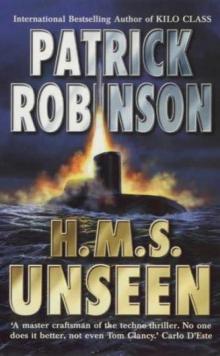 H.M.S. Unseen am-3
H.M.S. Unseen am-3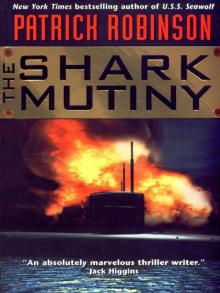 The Shark Mutiny (2001)
The Shark Mutiny (2001)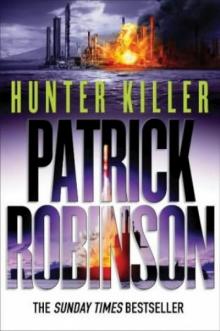 Hunter Killer am-8
Hunter Killer am-8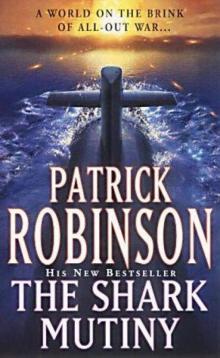 The Shark Mutiny am-5
The Shark Mutiny am-5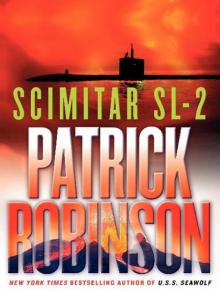 Scimitar SL-2
Scimitar SL-2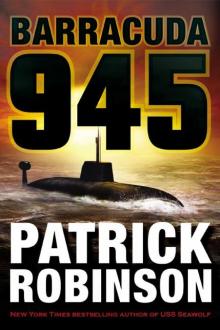 Barracuda 945 am-6
Barracuda 945 am-6 Hunter Killer
Hunter Killer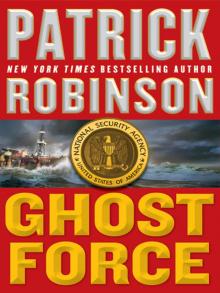 Ghost Force
Ghost Force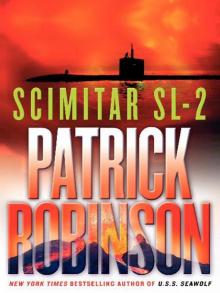 Scimitar SL-2 (2004)
Scimitar SL-2 (2004) Kilo Class am-2
Kilo Class am-2 The Lion of Sabray
The Lion of Sabray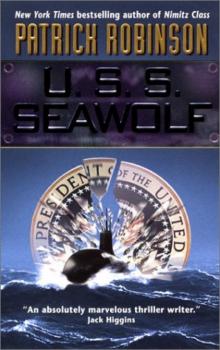 U.S.S. Seawolf am-4
U.S.S. Seawolf am-4 Ghost Force am-9
Ghost Force am-9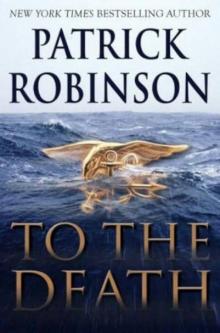 To the Death am-10
To the Death am-10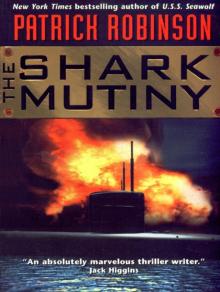 The Shark Mutiny
The Shark Mutiny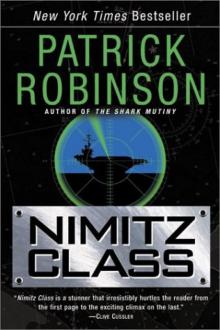 Nimitz Class am-1
Nimitz Class am-1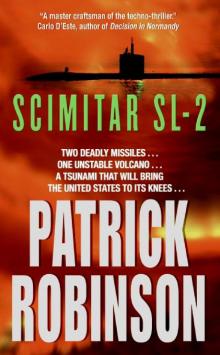 Scimitar SL-2 am-7
Scimitar SL-2 am-7 Barracuda 945
Barracuda 945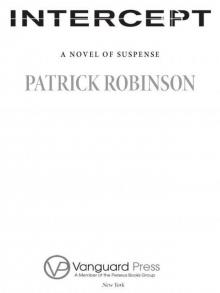 Intercept
Intercept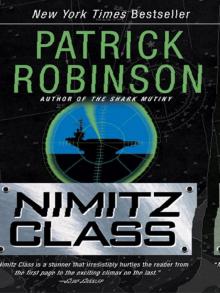 Nimitz Class (1997)
Nimitz Class (1997)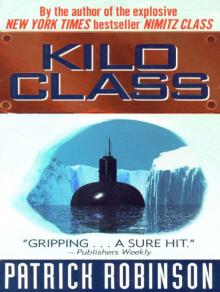 Kilo Class
Kilo Class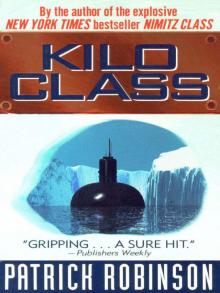 Kilo Class (1998)
Kilo Class (1998) Diamondhead
Diamondhead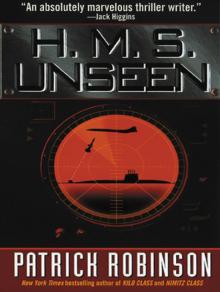 H.M.S. Unseen
H.M.S. Unseen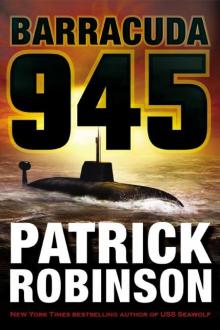 Barracuda 945 (2003)
Barracuda 945 (2003)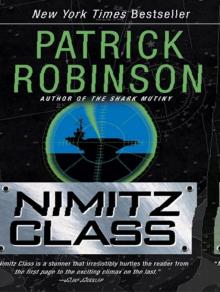 Nimitz Class
Nimitz Class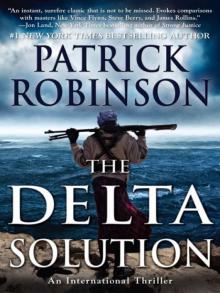 The Delta Solution
The Delta Solution U.S.S. Seawolf
U.S.S. Seawolf